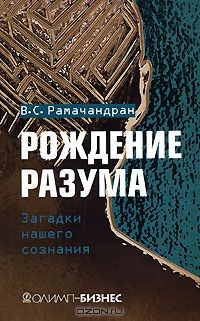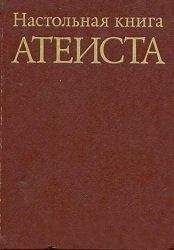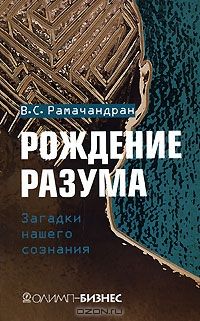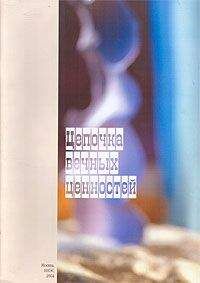Эндокринный орган (endocrine organ) (железа внутренней секреции) — орган, который выделяет гормон непосредственно в кровоток для регуляции клеточной деятельности других органов.
Эндорфины (endorphins) — нейротрансмиттеры, которые образуются в мозгу, чтобы вызывать клеточный и поведенческий эффекты, аналогичные вызываемым морфином.
Эстрогены (estrogens) — группа половых гормонов, которые обильно представлены в организме женщин. Они отвечают за половое созревание и другие функции.
Altschuler E., Wisdom S., Stone L., Foster C., Ramachandran V. S. Rehabilitation of hemiparesis after stroke with a mirror // Lancet. 1999. 353. p.2035–2036.
Arme! K. C., Ramachandran V. S. Acquired synesthesia m retimtis pigmentosa // Neurocase, 1999, 5 (4), p. 293–296.
Baron‑Cohen S., Burt L., Smith‑Laittan F., Harrison J., Bolton P. Synaesthesia: prevalence and familiarity // Perception, 1996, 25 (9), p. 1073–1080.
Berlin B. Evidence for pervasive synthetic sound symbolism m ethnozoological nomenclature / Eds. L. Hinton, J. Nichols, J. J.Ohala. Sound symbolism. New York: Cambridge Uni versity Press, 1994, chap.
Churchland P. Neurophilosophy. Cambridge, MA: MIT Press, 1996.
Churchland P. Brain wise: studies ш neurophUosophy. Cambridge. MA: MIT Press, 2002.
Clarke S., Regali L., Janser R. C., Assal G., De Tnbolet N. Phantom face // Neuroreport. 1996. 7 p. 2853–2857.
Crick F. The astonishing hypothesis: the scientific search for the soul. New York: Scnbner, 1994.
Crick F., Koch C. Consciousness and neuroscience // Cerebral Cortex, 1998, 8 (2), p. 97–107.
Darling D. Equations of eternity. New York: MJF Books, 1993.
Deacon T. The symbolic species. Harmondswoith: Penguin, 1997.
Domino G. Synesthesia and creativity in fine arts students: an empmcal look // Creativity Research Journal, 1989,2 (1–2), p. 17–29.
Ellis H., Young A. W., Quale A. H., De Pauw K. W. Reduced autonomic responses lo faces in Capgras syndrome // Proceedings of the Royal Society of London, 1997, В 264, p. 1085–1092.
Franz E., Ramachandran V. S. Bimanual coupling m amputees with phantom limbs // Nature Neuroscience, 1998, 1, p. 443 444.
Frith C., Dolan R. Abnormal beliefs, delusions and memory. Conference presentation. Harvard conlerence on memory and belief, 1997.
Galten F. Colour associations / Eds. S. Baron‑Cohen and J. E. Harrison. Synaesthesia: classic and contemporary readings. Oxford: Blackwell, 1997, p. 43–48.
Greenfield S. Private life of the brain. Harmondsworth: Penguin, 2002.
Harris A. J. Cortical ongm of pathological pain // Lancet, 1999, 354. p. 1464–1466.
Hirstein W., Ramachandran W. S. Capgras syndrome // Proceedings of the Royal Society of London, 1997, В 264, p. 437 — 444
Humphrey N. Consciousness regained. Oxford: Oxford University Press, 1983.
Hurley S.. Noe A. Neural plasticity and consciousness // Bio logy and Philosophy, 2003, 18, p. 131 —168
Josephson B., Ramachandran V. S. Consciousness and the physical world. Oxford: Pergamon Press, 1979.
La Cerra P., Bingham R. The origin of minds: evolution, uniqueness, and the new science of the self. New York: Harmony Books, 2002.
Lakoff G., Johnson M. Philosophy in the flesh: the embodied mmd and its challenge to western thought. New York; Basic Books, 1999.
Lueck C. J., Zeki S., Fristen К J., Detber M. P., Cope P., Cunningham V. J., Laamertsma A. A., Kennard С, Frackowiak R. S. The colour centre in the cerebral cortex of man // Nature, 1989 340 p. 386–389
McCabe C. S., Haigh R. C., Ring E. F., Halhgcm P., Wall P. D., Blake D. R. A controlled pilot study of the utility of mirror visual feedback in the treatment of complex regional pain syndrome (type 1) //Rehematology, 2003, 42, p 97 — 101.
Melzack R. Phantom limbs // Scientific American, 1992, 266, p. 120–126.
Merikle P., Dixon M. J., Smilek D. The role of synaesthetic photisme on perception, conception and memory. Speech delivered at the 12th Annual Meeting of the Cognitive Neuroscience Society. San Francisco, CA, 2002, April 14–16.
Merzenich M., Kaas J. Reorganization of mammalian somatosensory cortex following peripheral nerve injury // Trends in Neuroscience. 1980. 5. p. 434–436.
Miller S., Pettigrew J. D. Interhemispheric switching mediates binocular rivalry // Current Biology, 2000,10, p. 383–392.
Nielsen T. L. Volition: a new experimental approach // Scandinavian Journal of Psychology, 1963, 4, p. 215–230.
Nunn J. A., Gregory L. J., Brammer M., Williams S. C. R., Parslow D. M., Morgan M. J., Morris R. G., Bullmore E. T., Baron‑Cohen S., Gray J. A Functional magnetic resonance imaging of synesthesia: activation of V4/V8 by spoken words // Nature Neuroscience. 2002. 5 (4), p. 371 —375
Pons T. P., Garraghty P. E., Ommaya A. K., KaasJ., Taub E., Mischkin M. Massive cortical reorganization after sensory deafferentation in adult macaques // Science, 1991, 252, p. 1857–1860.
Ramachandran V. S. Anosognosia // Consciousness and Cognition, 1995, 1, p. 22–46.
Ramachandran V. S. Sharpening up «the science of art» //Journal of Consciousness Studies, 2001, 8 (1), p.9—29.
Ramachandran V. S., Altschuler E., Hilfyvr S. Mirror agnosia // Proceedings of the Royal Society of London, 1997, В 264, p. 645 — 647
Ramachandran V. S., Blakeslee S. Phantoms in the brain. Nevv York: William Moirow 1998.
Ramachandran V. S., Hirstein W. Three laws of qualia: whal neurology tells us about the biological functions of consciousness // Journal of Consciousness Studies. 1997, 4 (5–6), p 429–457.
Ramachandran V. S., Hirstein W. The perception ot pbaatom limbs; the D O. Hebb lecture // Brain, 1998, 121, p. 1603–1630.
Ramachandran V. S., Hirstein W. The science of art: a neurological theory of aesthetic experience // Journal of Consciousness Studies, 1999, 6 (6 — 71. p. 15–51.
Ramachandran V. S., Hubbard E. M. Psychophysical investigations into the neural basis of synaesthesia // Proceedings of the Royal Society of London, 2001a, В 268, p. 979–983.
Ramachandran V. S., Hubbard E. M. Synaesthesia — a window into perception, thought and language // Journal of Consciousness Studies, 2001b, 8 (12), p. 3—34.
Ramachandran V. S., Hubbard E. M. Synesthetic colors support symmetry perception, apparent motion, and ambiguous crowding Speech delivered at the 43 rd Annual Meeting of the Psychonomics Society. 2002, November 21—24
Ramachandran V. S., Hubbard E. M. Hearing colors and tasting shapes // Scientific American, 2003, May, p. 52–59.
Ramachandran V. S., Rogers‑Ramachandran D. Denial of disabilities in anosognosia // Nature, 1996, 377, p. 489–490.
Ramachandran V. S., Rogers‑Ramachandran D., Stewart M. Perceptual correlates of massive cortical reorganization // Science, 1992. 258: p. 1159–1160
Sathian K., Greenspan A. I., Wolf S. L. Doing it with mirrors, a case study of a novel approach to rehabilitation // Neurorehabilitation and Neural Repair, 2000, 14, p. 73–76.
Shodinger Erwin. Mind and matter // What is life? New York Cambridge University Press, 1992.
Stevens J., Stoykov M. E. Using motor imagery ш the rehabili tatlon of hemipaiesis // Archives of Physical and Medical Rehabilitation, 2003. 84. p. 1090–1092.
Stoerig P., Cowey A. Wavelength sensitivity in blindsight // Nature, 1989, 342, p. 916–918.
Torey Z. The crucible of consciousness. Oxford; Oxford University Press. 1999
TreismanA. M., Gelade G. A feature‑mtegration theory of attention // Cognitive Psychology, 1980, 12 (1), p. 97—136
Turton A. J., Butler S. R. Referred sensations following stroke // Neurocase, 2001, 7 (5). p. 397–405
Wegner D. The illusion of conscious will, Cambridge, MA: MJT Press, 2002.
Weiskrantz L. Blindsight. Oxford: Oxford University Press, 1986.
Whiten A. Imitation of sequential structure of actions in chimpanzees // Journal of Comparative Psychology, 1998, 112, p. 270–281.
Young A. W., Ellis H. D., Ouayle A. H., De Pauw K. W. Face processing impairments and the Capgras delusion // British Journal of Psychiatry, 1993. 162. p. 695–698.
Zeki S., Marmi L. Three cortical stages of colour processing in the human brain // Brain, 1998, 121 (9), p. 1669–1685.
Baddeley A. D. Working memory. Oxford: Churchill Livingstone, 1986
Barlow H. B. The biological role of consciousness m mmdwaves. Oxford: Basil Blackwell, 1987, p. 361–381.
Baron‑Cohen S. Mindblindness. Cambridge, MA: MIT Press, 1995.
Bickerton D. Language and human behaviour. Seattle; University of Washington Press, 1994.
Blackmore Susan Consciousness: An Introduction. New York: Oxford University Press, 2003.
Blakemore С. Mechanics of mind. Cambridge Cambridge University Press, 1997.
Carter R. Exploring consciousness. Berkeley; University of California Press, 2003
Chalmers D. The conscious mind. New York: Oxford University Press, 1996.
Corbalhs M. C. From hand to mouth: the origins of language. Princeton: Princeton University Press, 2002.
Crick F. The astonishing hypothesis. New York· Scribner, 1993.
Cytowick R. E. Synaesthesia - a union of the senses / 2nd edition (originally published 1989), New York: Springer‑Verlag, 2002.
Damasio A. Descartes' Error New York: G. P. Putnam, 1994.
Dehaene S. The number sense: how the mind creates mathematics. New York: Oxford University Press. 1997.
Dennett D. C. Consciousness explained. New York· Little, Brown, and Co, 1991
Edelman G. M. The remembered present: a biological theory of consciousness New York: Basic Books, 1989.
Ehrlich P. Human natures. Harmondsworth: Penguin Books, 2000.
Gazzaniga M. Nature's mind. New York: Basic Books, 1992.
Glynn I. An anatomy of thought. London. Weidenfeld and Nicolson, 1999
Greenheld S. The human bram: a guided tour London. Weidenfeld and Nicolson, 2000.
Gregory R. L. Eye and brain. London: Weidenfeld and Nicolson, 1966.
Hubei D. Eye, brain and vision. NewYork. W. H. Freeman, 1988.
Humphrey N. A history of the mind. Now York: Simon and Schuster, 1992.
Kandel er Schwartz J., Jessel T. M. Principles of neural science New York; Elsevier, 1991.
Kiimbourne M. Hemispheric specialization // American Psychologist, 1982, 37. p. 222–231.
Müner D., Goodale M. The visual brain in action. New York. Oxford University Press. 1995.
Mithcn Steven. The Prehistory oi the Mind. London: Thames & Hudson, 1999.
Pinker S. How the mind works. New York W. W. Norton, 1997.
Posner M., Raichle M. Images of mind New York: W. H. Freeman, 1997.
Premuck D., Premack A. Original intelligence. New York: McGraw‑Hill. 2003.
Quartz S. Sejnowski T Liars, lovers and heroes. New York: William Morrow, 2002.
Robertson I. Mind sculpture. New York: Bantam, 2000.
Sacks O. The man who mistook his wife for a hat. New York: HarperCollins, 1985.
Sacirs O. An anthropologist on Mars New York: Alfred Knopf, 1995.
Schacter D. L. Searching for memory. New York. Basic Books, 1996.
Wolpert L. Malignant sadness: the anaiomy of depression. Faber and Faber, 2001.
Zeki S. A vision of the brain. Oxford, Oxford University Press, 1993.
АННОТИРОВАННЫЙ ИМЕННОЙ УКАЗАТЕЛЬ
Брока (Вгоса) Поль (1824–1880), французский анатом, хирург и антрополог Открыл двигательный центр речи (центр Брока) в головном мозге (1863} Труды по методике антропологии, о современном и древнем населении Франции, сравнительной анатомии приматов. Одним из первых описал случаи моторной афазии.
91–93, 164, 174
Ван Гог (van Gogh) Винсент (1853–1890), нидервдндский живописец, выдающийся представитель постимпрессионизма.
56, 62
Вернике (Wermcke) Карл (1845–1905), немецкий врач, невропатолог. психиатр, психолог. Впервые описал сенсорную афазию.





